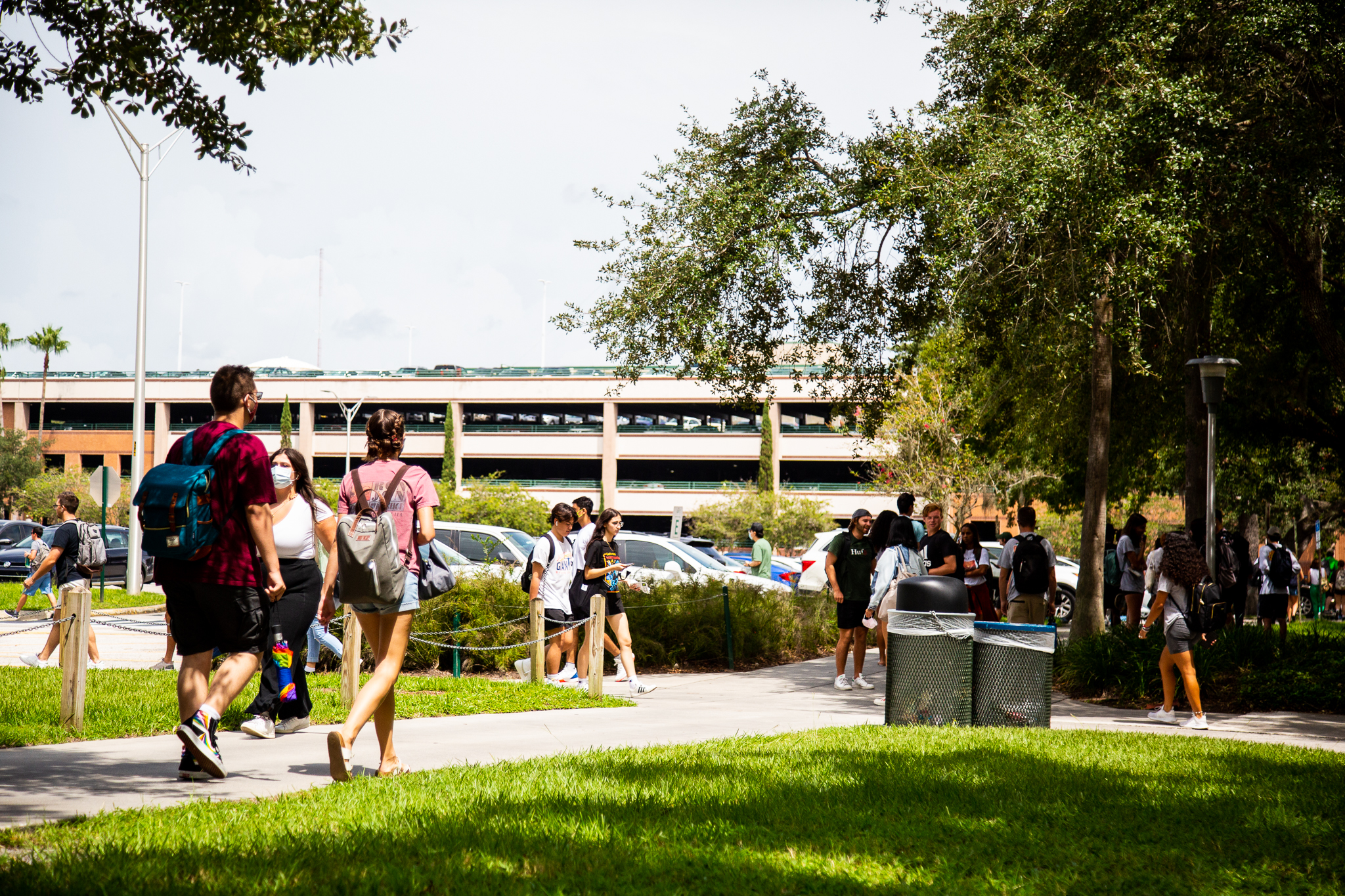Permitless carry bill draws mixed reactions from students

ORACLE PHOTO/LEDA ALVIM
Being a 5-foot-2-inch woman who is often on campus at night, senior environmental engineering major Aleyda Matamoros said she feels unsafe and as if anyone could hurt her. This prompted her to begin the process to carry a concealed weapon.
Matamoros, a member of USF’s College Republicans who owns a concealed carry permit herself, said that House Bill (H.B.) 543 could help reduce violence and save lives by making the ability to carry concealed weapons more accessible.
Promoted by Florida House Speaker Paul Renner, H.B. 543 would allow people to carry a concealed weapon without permit or training. This is referred to as constitutional carry by its supporters. People who are already forbidden from owning a firearm such as those with felony convictions would not qualify for permitless carry.
At a Jan. 30 press conference, Renner said the legislation would not endanger public safety and would allow people to defend themselves and their loved ones. If enacted the bill would take effect as soon as July 1. These types of laws are already in place in 25 other states, including Texas, Alabama and Georgia, according to NBC News.
Obtaining a permit is a difficult and tedious process, according to Matamoros. Because she went through the process during the pandemic, Matamoros said she struggled finding classes she needed to take for her permit and had to travel to a different county because Hillsborough county had temporarily stopped issuing them.
“It would be so much easier and nicer to be able to have just the ability to carry with a valid ID which obviously I do have,” Matamoros said. “[With the bill] a lot of people are going to not have to deal with the headache I dealt [and] more people will have access to it. I think that will also in turn generate a safer environment.”
Currently, people in Florida have to undergo the permitting process which includes background checks, fingerprinting, the completion of a training course, and payment for an application, according to the Tampa Bay Times. Individuals carrying concealed firearms must also have a photo ID with them at all times.
Gov. Ron DeSantis and Senate President Kathleen Passidomo, among others, have publicly endorsed the bill.
Elaine Sun, a junior biomedical sciences major, said the reasoning behind the bill is counterintuitive. She said the bill assumes that the people who claim they want a concealed weapon to take down a shooter aren’t the ones who could commit those shootings.
“If you’re giving anyone the ability to conceal carry a gun, you’re already putting everyone in a place where those situations are in increased likelihood to happen in general,” she said. “What’s the point of protecting a situation that you could prevent beforehand?”
Though concealed carry is important, the permitting process should not be removed, according to junior health sciences major Ginger Vernon.
She said if someone is trained and knows how to properly use a firearm, then they can step in and save more lives. However, if they are not trained and don’t know how to do something the right way, it could not work out.
“Having grown up around guns [and] I’ve shot guns before, I am very comfortable with it, but I know it’s not easy,” Vernon said.
The current permitting process in place requires that applicants demonstrate “competence with a firearm” by completing courses and training such as ones provided by the Fish and Wildlife Conservation Commission, National Rifle Association or classes offered to the general public by law enforcement agencies.
Junior criminology major Stephanie Herrera said HB 453 could aggravate active shooter situations, rather than alleviating the problem. Even if the individuals who would carry concealed firearms were good people, without the proper training it would prove unhelpful, she said.
The fear of being in large public settings where there could be an active shooter is also a fear people should not have, Herrera said.
“There’s people in other countries that don’t have to live with that fear of going into crowded spaces thinking that it’s their last time there,” she said. “ I think people shouldn’t have that.”
University Police’s (UP) guidelines for an active shooting gives faculty and students a possible course of action. The checklist suggests that students who are not safe to flee the building secure an area by barricading doors and turning down both lighting and noise. In the case that the shooter entered a class or office, overcoming the suspect would be the last resort in extreme situations. It also advises on how to unsecure an area.
The website briefly describes police response, including isolating the assailants and the arrival of rescue teams to help those injured.
UP was contacted by The Oracle but declined to comment on pending legislation.
The legislation is also increasingly relevant in the current context of increased school shootings, Sun said. It presents a potentially dangerous situation for any large settings because, without “proper training or licensing,” weapons can become difficult to track and accidental firings could occur, according to Sun.
Matamoros said if people knew that other individuals on campus could be carrying weapons, violence as a whole would reduce. She would like to see concealed carry weapons allowed on campus making the situation safer when walking around a big campus at night, she said.
“In my opinion, it ties very closely to the U.S. constitution and the second amendment. I think every citizen should have a right to be able to bear arms and defend themselves or others against any potential threat, especially any kind of deadly threat, whether it be another person or anything like that,” Matamoros said.








